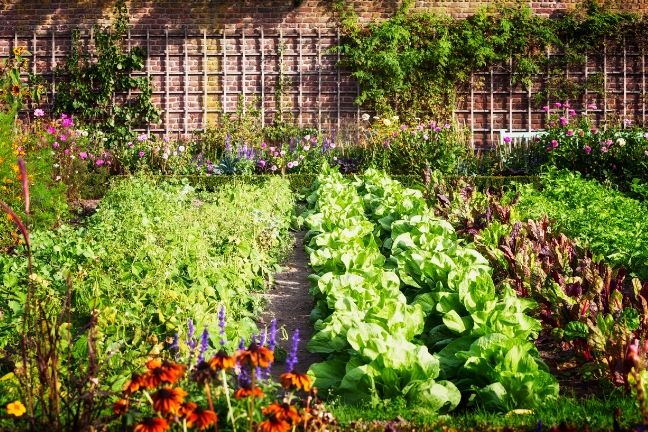Urban gardening has emerged as a transformative movement, providing city dwellers with an opportunity to reconnect with nature, promote sustainability, and foster a sense of community. As urbanization continues to reshape the landscape of our cities, the concept of cultivating green spaces within the urban environment has gained traction.
This practice, commonly known as urban gardening, encompasses a range of activities from rooftop gardens and community plots to vertical farming and guerrilla gardening. In this exploration, we delve into the various facets of this type of gardening, its benefits, challenges, and the profound impact it has on individuals and communities. Have a look at this detailed guide by Earthed.
Defining Urban Gardening
Some things, like enjoying a yard or finding a space to park your car, may seem unachievable if you live in an urban environment, but gardening does not have to be one of those things. The art of cultivating plants in an urban setting is known as urban gardening. The benefits of urban gardening for the environment, the economy, and food security may surprise you.
This type of gardening is the practice of growing plants, fruits, vegetables, and herbs within the confines of urban spaces. Unlike traditional rural agriculture, urban gardening is characterized by its compact scale and adaptability to limited spaces such as balconies, rooftops, and vacant lots. The primary goal is to harness these spaces to cultivate a diverse array of plants, promoting sustainability, and fostering a symbiotic relationship between urban inhabitants and their environment.
Urban Gardening Types
This type of gardening encompasses various approaches to cultivating plants within the confines of urban spaces. Each type offers unique advantages and addresses specific challenges associated with limited space in densely populated areas.
Community Gardens
Community gardens are shared spaces where individuals come together to cultivate and maintain a communal plot of land. These spaces serve as hubs for social interaction, knowledge sharing, and collective responsibility. Participants not only enjoy the fruits of their labor but also foster a sense of community and environmental stewardship.
Rooftop Gardens
In urban areas where ground space is a premium, rooftops become valuable real estate for gardening. Rooftop gardens utilize available space to create green havens, offering a respite from the concrete jungle. These elevated gardens contribute to temperature regulation, energy efficiency, and enhanced aesthetics while promoting sustainable urban development.
Vertical Farming
Vertical farming is a revolutionary approach to urban agriculture that involves growing crops in vertically stacked layers, often within controlled indoor environments. Utilizing advanced technologies such as hydroponics and aeroponics, vertical farming maximizes space efficiency, minimizes water usage, and reduces the environmental impact associated with traditional agriculture. This method is particularly well-suited for urban environments where horizontal space is limited.
Guerrilla Gardening
Guerrilla gardening is a form of activism where individuals cultivate neglected or abandoned spaces without explicit permission. This spontaneous form of gardening aims to reclaim urban areas, transform them into green spaces, and raise awareness about the importance of sustainable practices. Guerrilla gardening fosters a sense of empowerment, encouraging individuals to take an active role in reshaping their urban environment.
Urban Gardening Benefits
This has countless advantages, including lowering food miles, encouraging healthy eating, enhancing air quality, and giving communities access to green spaces. It should come as no surprise that urban gardening is growing in popularity as people seek out sustainable living options, fresh, healthful vegetables, and methods to lessen their carbon footprint in busy, bustling cities.
Access to Fresh Produce
One of the primary benefits of this type of gardening is the direct access to fresh and locally grown produce. By cultivating fruits, vegetables, and herbs within city limits, urban dwellers reduce their reliance on mass-produced, commercially available food. This not only promotes a healthier diet but also reduces the carbon footprint associated with the transportation of food over long distances.
Environmental Sustainability
This type of gardening plays a crucial role in enhancing the environmental sustainability of urban areas. Through the incorporation of green spaces, gardening helps mitigate the heat island effect, improve air quality, and promote biodiversity. These ecological benefits contribute to creating more sustainable and resilient urban environments.
Community Building
Community gardens, in particular, serve as focal points for social interaction and community building. Shared gardening spaces create opportunities for neighbors to come together, share knowledge, and collectively contribute to the well-being of their environment. The act of tending to a communal garden fosters a sense of belonging, shared responsibility, and a stronger community bond.
Educational Opportunities
This serves as an educational tool, providing hands-on learning experiences for individuals of all ages. Schools and community organizations often use gardening as a platform to teach about plant cultivation, environmental science, and sustainable living practices. This educational aspect not only enhances awareness but also equips individuals with valuable skills for a more sustainable future.
Improved Well-being
Engaging in urban gardening has been linked to improved mental health and overall well-being. The act of nurturing plants, spending time in green spaces, and witnessing the tangible results of one’s efforts contribute to stress relief, a sense of accomplishment, and a deeper connection with nature. Urban gardening offers individuals a therapeutic escape from the hustle and bustle of city life.
Tips for Beginners
Use this beginner’s guide to get started if you’re new to urban gardening.
- Determine what you need. Determine the kind of urban garden that will best suit your needs before beginning one, whether it’s for the community or your own house. Maybe you discover that while root vegetables are readily available at the grocery store, the leafy greens department is far from ideal. Or maybe a peaceful perennial herb garden would be more beneficial to your community than a veggie garden. Whatever it is, consider what kind of garden might best address the unique issues that your family or community faces.
- Evaluate the space where you are growing. It’s critical to ascertain the growing conditions of the chosen gardening region before selecting a gardening technique. If you have access to an outside area, observe the amount of sunlight, the area’s size, and any nearby water. Throughout the growth season, keep an eye out for any trees, buildings, or other barriers that could create shadows on your garden in confined urban areas. In low-light locations, steer clear of planting flowering plants or vegetables that require bright light, and vice versa.
- Select your technique for urban gardening. It’s time to select your gardening technique after determining your needs and noting the growth environment. The greatest gardening options for people with limited area include vertical gardens, hydroponic gardens, indoor gardens, and container gardens. Raised beds or a rooftop garden are options if you have more space available. If you live in an apartment complex, consult the management company before deciding to plant a balcony or rooftop garden.
Challenges
Limited Space
One of the primary challenges of urban gardening is the limited space available. Balconies, rooftops, and small plots require creative solutions to optimize planting and harvesting.
Soil Quality and Contamination
Urban soil may be contaminated with pollutants, posing a challenge to successful gardening. Implementing raised beds and using quality soil amendments are common strategies to address this issue.
Water Management
Urban environments often face water scarcity and restrictions. Efficient water management becomes crucial in urban gardening to ensure sustainable practices and minimize water wastage.
Regulatory Hurdles
Some urban gardeners encounter regulatory challenges, such as zoning restrictions and land-use policies. Overcoming bureaucratic hurdles is essential for the expansion of urban gardening initiatives.
FAQs
What is urban gardening, and how does it differ from traditional rural agriculture?
This is the practice of growing plants, fruits, vegetables, and herbs within urban spaces. Unlike traditional rural agriculture, urban gardening is characterized by its compact scale and adaptability to limited spaces such as balconies, rooftops, and vacant lots. The primary goal is to harness these spaces to cultivate a diverse array of plants, promoting sustainability and fostering a symbiotic relationship between urban inhabitants and their environment.
What are the benefits of engaging in urban gardening for individuals and communities?
This offers a multitude of benefits, including access to fresh produce, environmental sustainability, community building, and educational opportunities. It provides direct access to locally grown produce, contributes to environmental well-being, fosters a sense of community, and serves as an educational tool for individuals of all ages to learn about plant cultivation, environmental stewardship, and sustainable living practices.
What are the primary challenges associated with urban gardening, and how can they be addressed?
Challenges in this type of gardening include limited space, soil quality and contamination, water management, and regulatory hurdles. Gardeners address these challenges through creative space optimization, using raised beds and quality soil amendments to combat soil issues, implementing efficient water management practices, and overcoming regulatory hurdles through community engagement and advocacy.
How does urban gardening contribute to environmental sustainability in urban areas?
Urban gardening contributes to environmental sustainability by mitigating the heat island effect, improving air quality, and promoting biodiversity. Incorporating green spaces into urban environments helps regulate temperatures, filter pollutants, and create habitats for diverse plant and animal species. These ecological benefits enhance the overall sustainability of urban areas.
Conclusion
Urban gardening stands at the intersection of environmental sustainability, community building, and personal well-being. As cities continue to evolve, the importance of integrating green spaces into urban landscapes becomes increasingly evident.
The rise of urban gardening represents a shift towards a more conscious and harmonious relationship between urban dwellers and their environment. As we celebrate the one-year milestone of this transformative movement, it is clear that urban gardening has not only taken root but has also become an essential component in shaping the sustainable and resilient cities of the future.


2 replies on “Urban Gardening – Guide to Cultivate Green Havens”
[…] Interested in gardening, learn about urban gardening. […]
[…] a world where sustainability is paramount, permaculture stands as a beacon of hope. It is a design philosophy that doesn’t […]